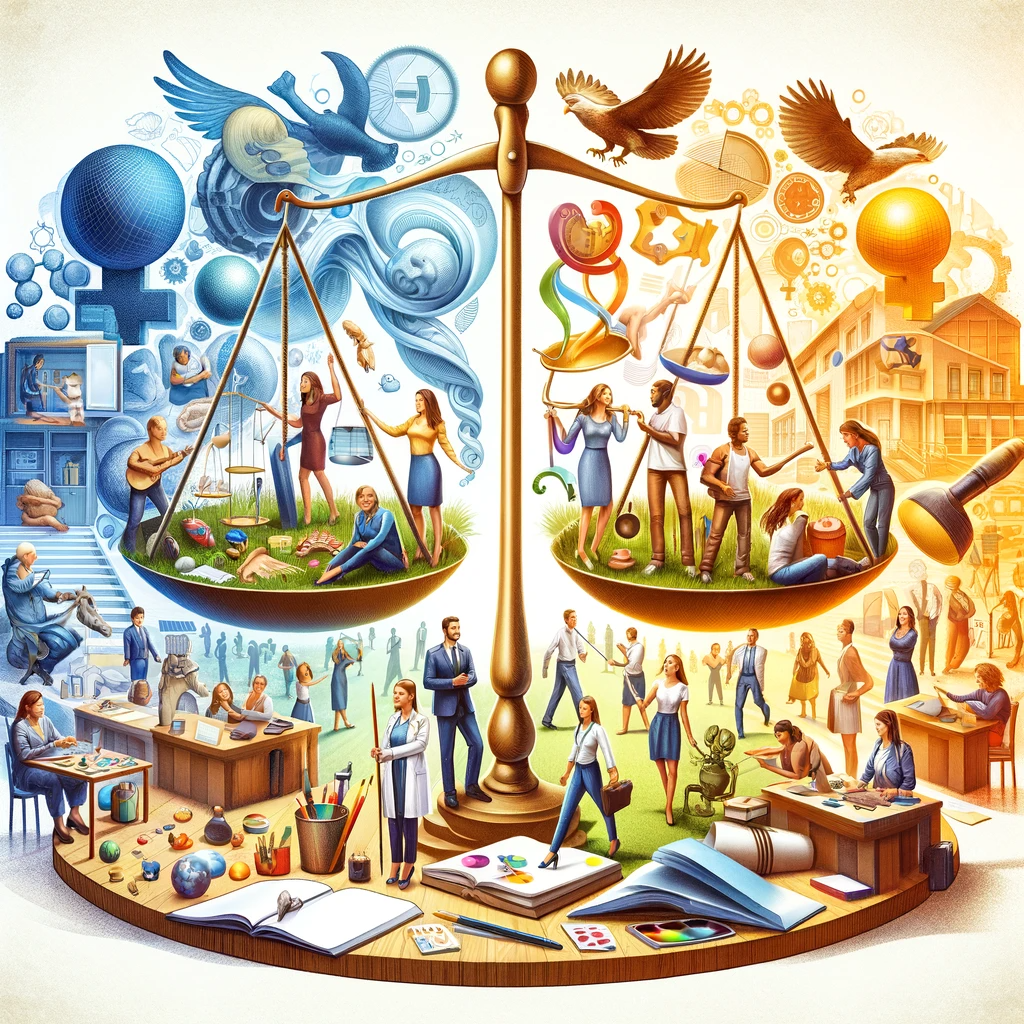Definition
Gender equality refers to all genders’ equal rights, responsibilities, and opportunities. It’s a foundation for a fair and just society.
Expanded Explanation
Gender equality is about fairness and recognizing diverse strengths and abilities across genders. It plays a crucial role in societal development, promoting balanced participation in all aspects of life. This concept transcends mere equality, aiming for equity and inclusion in all sectors.
Importance
This principle is vital as it fosters diversity, enriches perspectives, and promotes societal progress. It also addresses systemic biases, leading to more equitable education, workplace, and governance outcomes.
Context and Usage
In workplaces, gender equality means equal pay and opportunities. In education it involves unbiased access to learning for all genders. It’s also crucial in legal contexts to ensure equal treatment and protection under the law.
Examples
Example 1: A company implementing equal pay and advancement opportunities showcases gender equity, fostering a diverse and dynamic workplace.
Example 2: STEM programs are offered equally to all students in education, breaking traditional roles and exemplifying gender equality.
Understanding the Glossary Term
A common misconception is that gender equality benefits only women. In truth, it helps all genders by creating fairer, more inclusive societies.
Related Glossary Terms
Feminism: This movement advocates for women’s rights on the grounds of gender equality. It’s a crucial ally in the fight for equal opportunities and treatment for all genders.
Intersectionality: This term recognizes multiple factors like race, class, and gender intersecting to affect an individual’s experiences. It’s related to gender equity as it broadens the understanding of how different identities impact rights and opportunities.
Visual and Reading Aids
External Resources
1. National Strategy on Gender Equity and Equality
Summary: The Biden-Harris Administration’s national gender strategy aims to promote the participation of all people, including women and girls, in various societal aspects. This groundbreaking initiative is a significant step towards addressing sex-based disparities and advancing equity.
- Link: National Strategy on Gender Equity and Equality
- Importance: As the first-ever national strategy, this resource is critical to understanding U.S. governmental efforts to enhance gender parity.
2. United Nations: Gender Equality and Women’s Empowerment
Summary: The United Nations emphasizes gender parity as a fundamental human right and a cornerstone for a peaceful and prosperous world. This resource underlines the global commitment to empowering women and achieving equality across all spheres of life.
- Link: United Nations Gender Equality
- Importance: The United Nations’ view offers a global context, underlining its role in sustainable development goals and international gender issues.
Related Articles
1. Sustainable Development Goals: Pioneering Sustainable Change
The article “Sustainable Development Goals: Pioneering Sustainable Change” examines the UN’s 17 SDGs adopted in 2015. The goals aim to end poverty, safeguard the environment, and promote prosperity for everyone. Additionally, any spelling, grammar, or punctuation mistakes have been corrected.
The article highlights the SDGs’ role in driving global change, with worldwide initiatives aligning for sustainable, inclusive development. It underscores the importance of gender equality (Goal 5) for progress, emphasizing equal rights and opportunities for women and girls in achieving broader goals. Read the article here.
2. Powerful 10 Gender Equality Quotes and Their Impact
The blog features influential quotes advocating for equal rights among all genders, analyzing their impact to inspire readers. It serves as a potent reminder of how words can drive societal change and empower individuals to attain gender parity. Read the article here.


